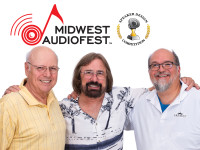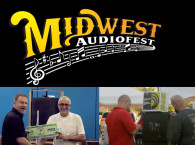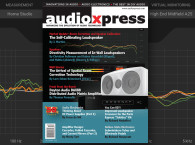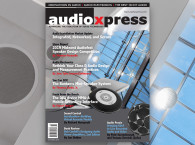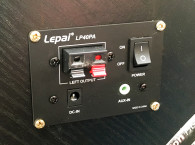Photos courtesy of Parts Express

I often get asked why people build their own speakers when there are so many very fine commercially available choices in all price ranges. This goes to the heart of the do it yourself (DIY) philosophy, where several factors are very important. First is the learning experience where every time you build something new you learn new materials and techniques. Second is the ability to tailor the project to get the outcome you want, not what some product development person thought you should have. Third is the bragging rights you have when you show your new speaker to admiring friends. Fourth is the camaraderie that results from collaborating with other like-minded DIYers.
All of this combined talent and energy comes together every year at the MWAF. When you are there and listen to the interactions of both the new and also very experienced builders you realize the power of this event to generate enthusiasm at a very high level. This not only relates to good sound but often exceptional artistic and construction skills. I have been auditioning very high quality commercial speakers and also building my own speakers for many years yet am really amazed by what I see and hear every year at the MWAF.

What is the Speaker Design Competition?
The purpose of this event is to provide builders with a chance to show their speakers in a forum that is controlled and also tailored to allow for different levels of speakers. There are four categories that contain all the entries. Since complete details are available on the MWAF site, I will summarize.
Open Unlimited Category: This is a no-holds-barred category where any design is allowed. There is no limit on the number or types of drivers used, the housing design, or the cost, and it is the only category that allows active crossovers, any type of EQ, limiters, and time alignment. In theory, this should be the highest performing category sonically.

Dayton Audio Category: This category allows any number or types of drivers, any cabinet design, any cost, but the crossovers if used must be passive with no EQ or other modifications allowed. In addition, the drivers must be of the Dayton Audio brand.
Over $200 Category: Like the Dayton Audio category, the choice of drivers is unlimited but allows any brand. The only caveat is that the total cost of drivers is greater than $200. Again, strictly passive crossovers are required. You might ask why this category forces the cost of drivers to be over $200. The answer is to separate the entries from the last category which follows.
Under $200 Category: I am always reminded of “The Little Engine That Could” when I think about this category. The overriding criteria in this section is that the cost of all drivers used for the stereo pair must retail for under $200. Again, although any housing design can be used, the crossovers must be passive with no EQ or other electronic modifications.

When I first learned of the Under $200 category, what immediately popped into my mind was “you must be kidding me.” On the surface it seemed like a nearly impossible task to produce a good sounding speaker with that restriction. As I auditioned some of the entries in this category while judging my first MWAF, I realized that there are some very talented DIY speaker designers out there. What is also critical are the tools now available to model the various choices to be made and the tremendous gains in driver performance as a result of new materials and designs. It is very possible to be successful with that price restriction.
This article was originally published in audioXpress, October 2019. Read the full report, now available online.



